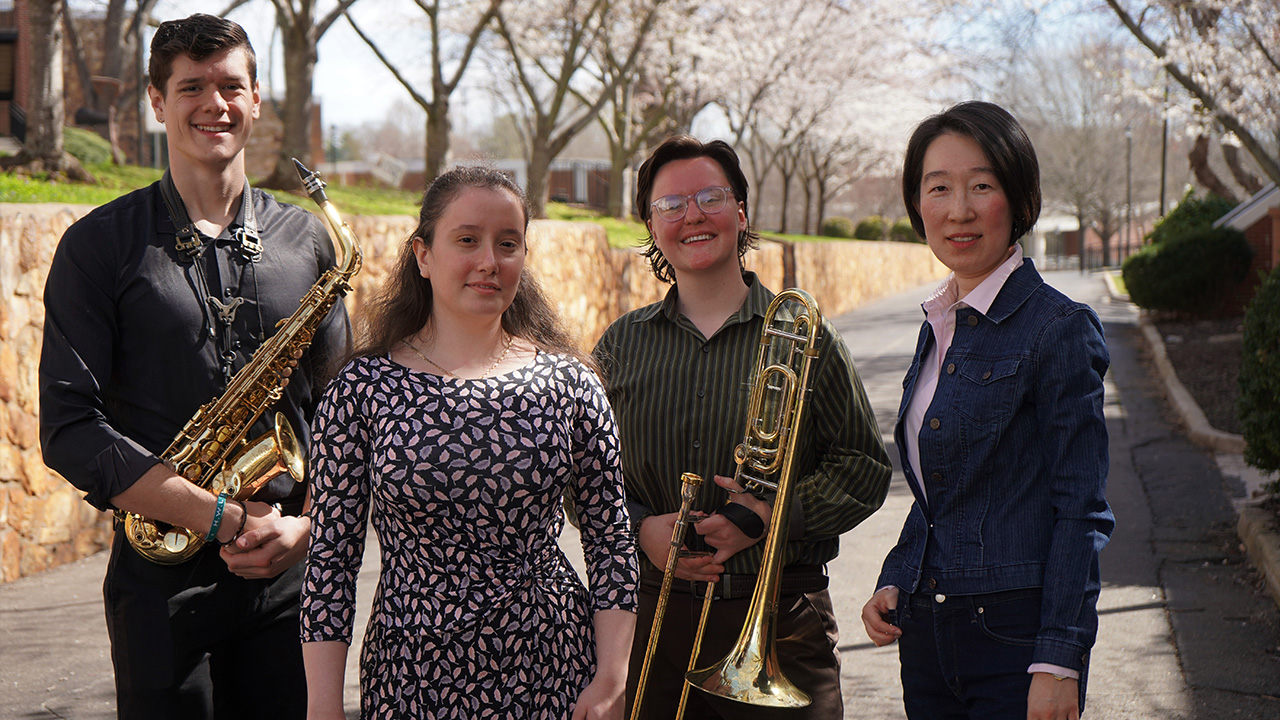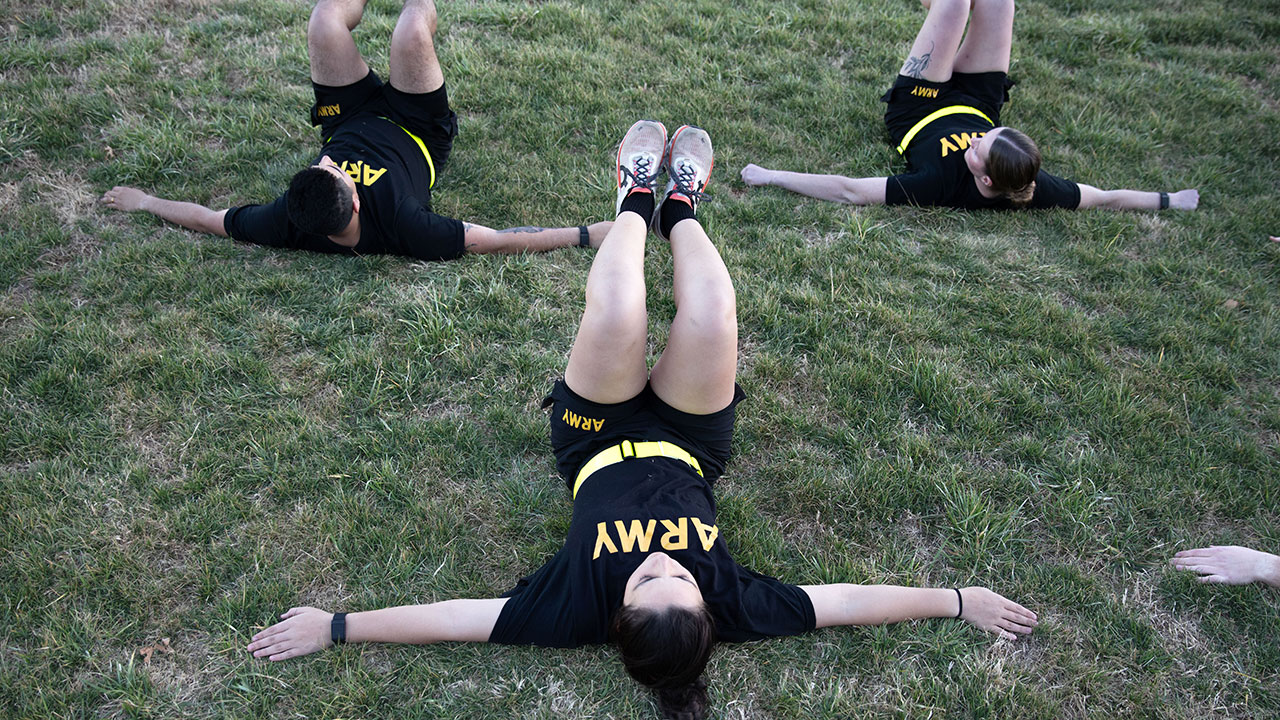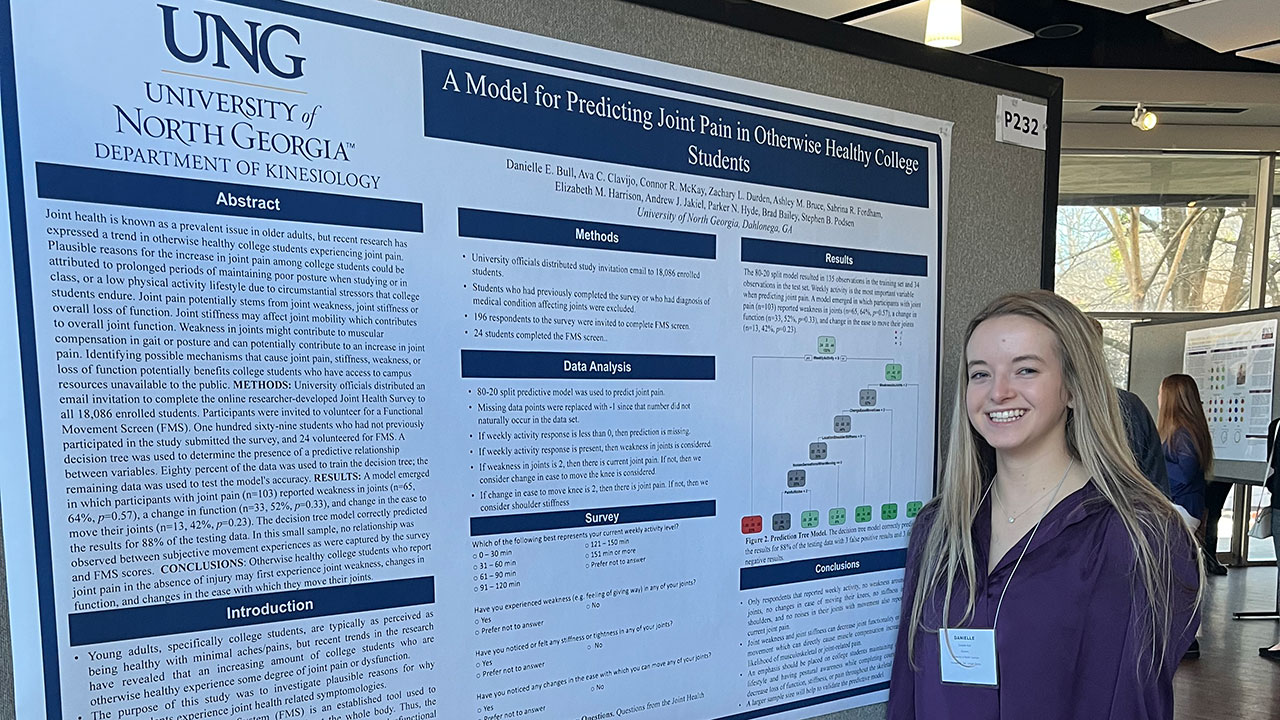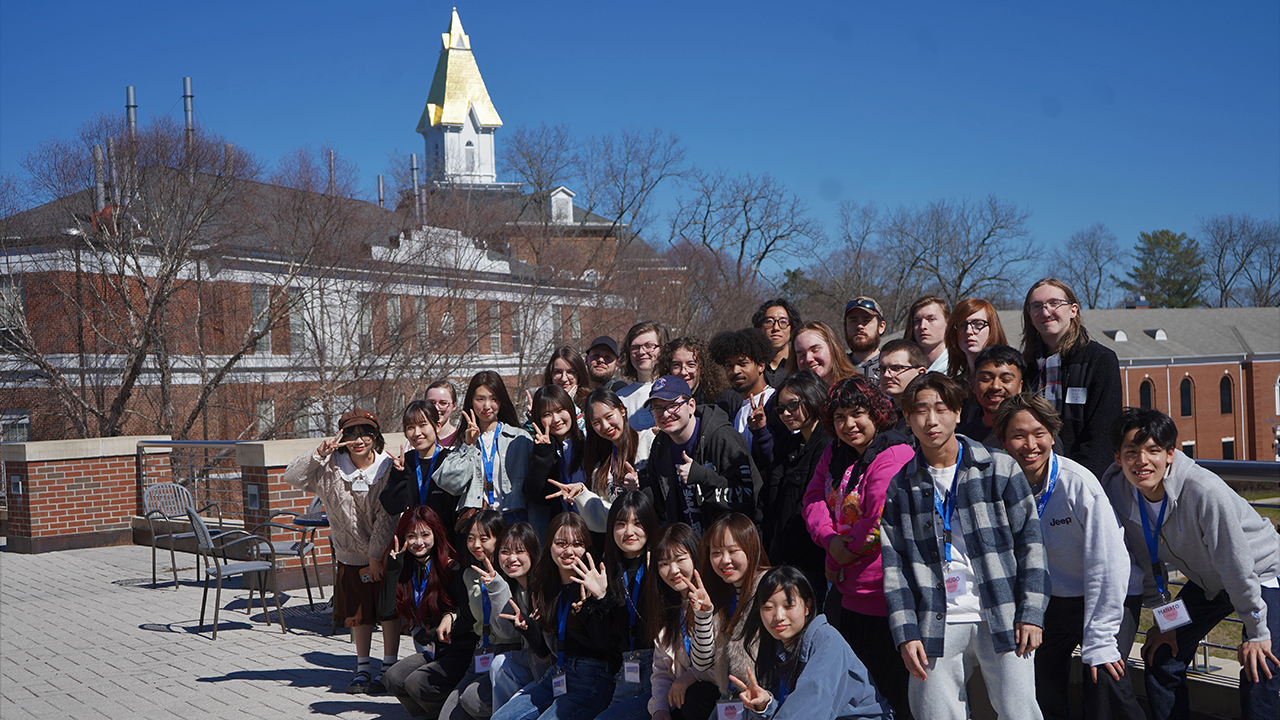Departments collaborate to research effects of drumming on chronic pain

Article By: Clark Leonard
The physical therapy and music departments at the University of North Georgia (UNG) collaborated this spring on a 10-week research program to explore the link between drumming and a possible decrease in chronic pain.
A $2,850 grant from Move Together's Pro Bono Incubator funded the research, with most of the money purchasing drums.
Dr. Don Walsh, associate professor of physical therapy at UNG, was grateful to collaborate with Steven Walker, limited-term faculty and adjunct professor of percussion at UNG.
"We don't know much about music. They don't know much about physical therapy. And we can have this time together that's fun and interactive with patients from the community. It's a good mix," Walsh said. "The process has been very engaging, fresh and fun."
Walker enjoyed facilitating the weekly drum circles to teach participants rhythms from different parts of the world.
"It is a lot of fun because you get to see them discover things about themselves by playing music," Walker said. "There's a sense of wonder again because they're out of their comfort zones."
Walsh said study participants had to have bodily pain for which they were taking medication. Two of Walsh's Doctor of Physical Therapy (DPT) students, Grace Goodfellow and Abby Young, recorded information about participants each week, ranging from perceived exertion and heart rate; pain location and intensity; assessment of mood; identification of functional limitations and current medications due to pain; and sound qualities, like frequency and decibel levels, produced by the actual drumming. They plan to check in with participants in June.
Walker also had one of his music students, Brenden Dowridge-Williams, help facilitate the drum circles.
Walsh said the communal aspect and the rhythm of drumming provided a welcome distraction from the participants' pain.
"People can get a sense of purpose and confidence," Walsh said.
Dr. Susan Klappa, a professor of physical therapy who joined UNG's faculty in March, also helped. She enjoyed seeing participants redirect their thoughts about pain.
"They were afraid to move. Now they're not quite as afraid of it," Klappa said. "You dismantle the fear and then can amplify your ability to move."
Wendy Wood, a resident of Dahlonega, Georgia, wanted to participate in a drum circle since taking part in one during the 1996 Atlanta Olympics. She learned about the study through a flyer at the Lumpkin County Senior Center.
"I had back pain and stress," Wood said. "I thought it might be good to try it."
Young, a second-year DPT student from Newnan, Georgia, was excited to be part of the research.
"The participants have been great to get to know and learn their story," said Young, adding that the weekly check-ins were crucial. "That's what physical therapy is: treating patients long term."
Goodfellow, a second-year DPT student, said the research made her feel more connected to the Lumpkin County community. She is curious about the research's implications.
"I'm excited to see where it goes," Goodfellow said.
Walker feels like this could be the start of larger collaboration between physical therapy and music faculty. Walsh agrees and is thankful for the enthusiastic support of both Dr. Mary Ellen Oesterle, physical therapy department head, and Dr. Benjamin Schoening, music department head.
"This was an obvious and easy way for us to come together," Walker said. "Cross-discipline collaboration is healthy and important. It fosters goodwill throughout the university. It brings personnel together."



